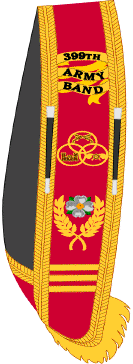

A baldric (also baldrick, bawdrick, bauldrick as well as other rare or obsolete variations) is a belt worn over one shoulder that is typically used to carry a weapon (usually a sword) or other implement such as a bugle or drum. [1] [2] [3] The word may also refer to any belt in general, but this usage is poetic or archaic. In modern contexts, military drum majors usually wear a baldric. [4]

